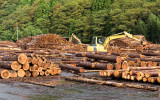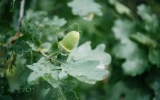Almond Yield per Tree: What to Expect in Profits
The yield per tree directly impacts the amount of almonds produced, which in turn affects the revenue generated. A higher yield per tree means more almonds are produced, which translates to increased revenue and profits. In this article, we'll find out how many almonds are produced from a single tree and what you can expect in terms of profit.
On average, almond trees can yield approximately 50–85 pounds per tree. If a pound is priced at $2.25–$2.50 per pound, the estimated revenue per tree would be $112.50–$212.50. After subtracting production costs, such as land, labor, and equipment, estimated profits per tree would be around $45–$85.
However, the yield per tree for almonds can vary depending on the variety of almonds you are farming as well as the region where they are grown. Let's take a closer look at how these affect your yield and expected profits in almond farming.
Summary
- Assuming a price of $2.25–$2.50 per pound, estimated profits per almond tree range from $50–$85, depending on the variety.
- The nonpareil almond variety has the lowest estimated profits per tree (around $50–$75) due to the need for additional pollinator trees and susceptibility to pests and diseases.
- Butte, Carmel, and Monterey have similar yield capacities and are known for their high yield potential (about 60–85 lbs of almonds), disease resistance, and excellent nut quality and flavor.
- The USA has the highest almond yield per tree, ranging from 50 to 100 pounds, followed by the EU with an average yield of 80 pounds per tree, while India and Turkey have the lowest yield per tree, ranging from 15 to 30 pounds.

On this page:
Average Almond Yield per Tree Based on Variety
The table below shows different varieties of almonds and their average yield per tree and per acre:
| Almond Variety | Average Yield per Acre | Average Yield per Tree |
|---|---|---|
| Nonpareil | 2,000-3,000 lbs | 50-75 lbs |
| Butte | 2,500-3,500 lbs | 60-85 lbs |
| Carmel | 2,500-3,500 lbs | 60-85 lbs |
| Monterey | 2,500-3,500 lbs | 60-85 lbs |
Nonpareil, Butte, Carmel, and Monterey are some of the most popular almond varieties grown in California. On average, Nonpareil almond trees can yield 2,000-3,000 pounds per acre or approximately 50-75 pounds per tree.
Butte, Carmel, and Monterey almond trees can yield 2,500-3,500 pounds per acre or approximately 60-85 pounds per tree. These different almond varieties also require different densities per acre.
Average yield and profit from Nonpareil almond trees
Nonpareil is the most widely planted almond variety in California, and it is known for its high kernel quality and market demand. A tree can produce an average yield of 2,000-3,000 pounds per acre, or approximately 50-75 pounds per tree.
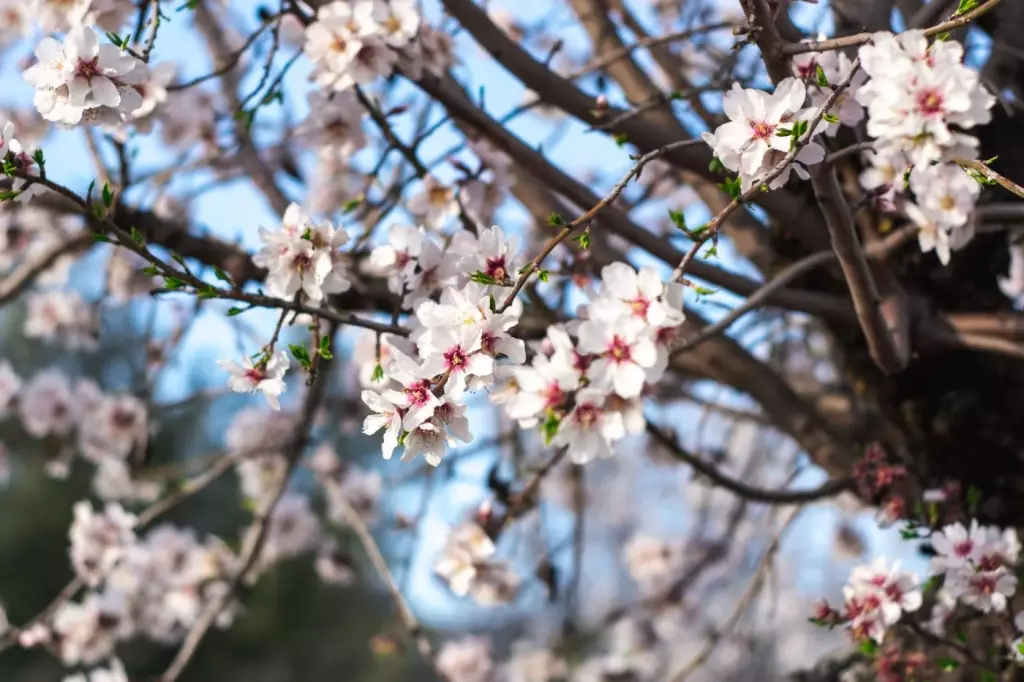
Assuming a price of $2.50 per pound, the estimated revenue per tree would be $125-$187.50. After subtracting production costs, such as land, labor, and equipment, estimated profits per tree would be around $50-$75.
Nonpareil almond trees have a lower yield per tree compared to some other varieties because they are self-incompatible, which means they require cross-pollination with other almond varieties to produce fruit.
This requires planting additional pollinator trees, which take up space and resources that could otherwise be used for Nonpareil trees.
Additionally, Nonpareil trees are susceptible to certain pests and diseases, which can affect their yield and quality. However, despite these challenges, Nonpareil almonds remain popular among growers and consumers due to their high quality and market demand.
Average yield and profit from Butte almond trees
Butte almond trees can produce an average yield of 2,500-3,500 pounds per acre, or approximately 60-85 pounds per tree. Butte is known for its high yield potential and disease resistance.
If sold at $2.25 per pound, the estimated revenue per Butte almond tree would be $135-$191.25, and estimated profits per tree would be around $60-$85.
Butte almonds are typically harvested in late August or early September, and they have a medium to large kernel size with a smooth, slightly wrinkled surface.
They have a mild, sweet flavor and are often used in a variety of culinary applications, including baking, snacking, and as a topping for salads and other dishes.
In addition to their high yield potential and disease resistance, Butte almonds are also known for their versatility in the kitchen. They can be used in a variety of recipes, from sweet to savory, and they are a good source of protein, fiber, and healthy fats.
Average yield and profit from Carmel almond trees
Carmel produces an average yield of 2,500-3,500 pounds per acre or approximately 60-85 pounds per tree. The estimated profits per Carmel almond tree is around $60-$85 if they are sold at a price of $2.25 per pound.
Carmel almond trees are known for their high yield potential because they have a late bloom period, which means that they are less susceptible to frost damage compared to other almond varieties that bloom earlier in the season. This allows the trees to produce more flowers and ultimately more almonds.
In addition to their late bloom period, these almond varieties are also known for their vigorous growth and strong root systems, which allow them to withstand a range of environmental stresses such as drought, high winds, and soil salinity.
This resilience helps to ensure consistent yields year after year, making Carmel almond trees a popular choice among almond growers.
Furthermore, their large kernel size makes them highly desirable in the market. They are often used for snacking, baking, and other culinary purposes, which means that they can command a higher price point compared to smaller kernel varieties.
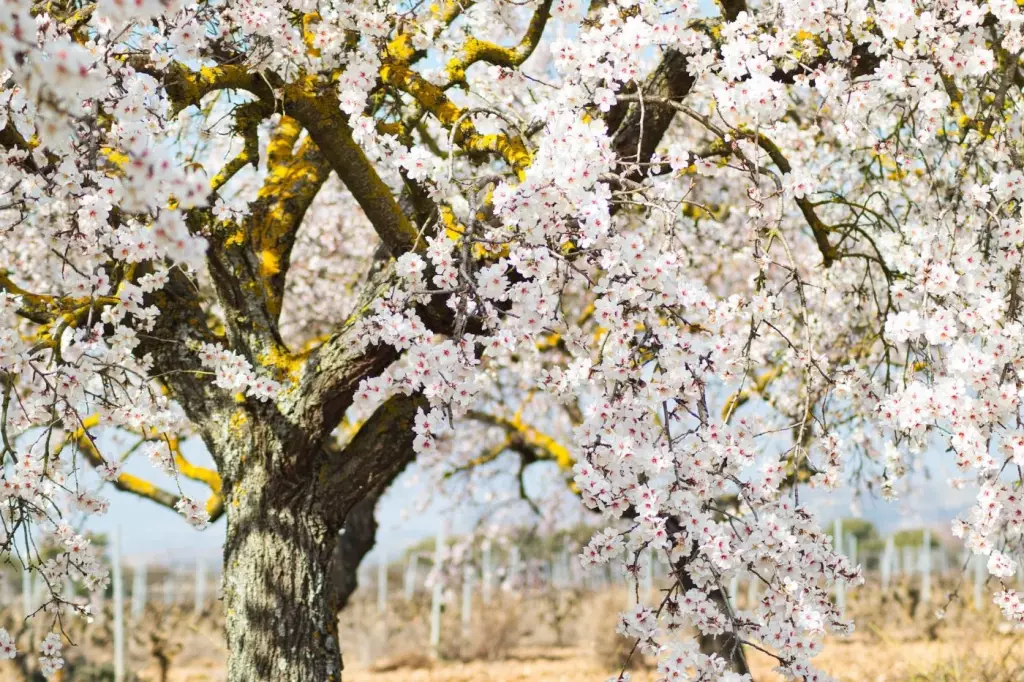
Average yield and profit from Monterey almond trees
Monterey is a popular almond variety known for its early bloom and high-yield potential. They have the same yield capacity as Carmel and Butte, which is around 60-85 pounds per tree. If sold at $2.25 per pound, the estimated profits per tree would be around $60-$85.
In addition to its high yield potential, Monterey almonds are also known for their excellent nut quality and flavor. They have a smooth, slightly sweet taste and a crunchy texture, making them a popular choice for snacking and baking.
They are also relatively easy to grow and maintain, as they are resistant to many common almond diseases and pests. They require regular watering and fertilization, but with proper care, they can produce high-quality nuts for many years.
Average Almond Yield per Tree in Different Regions
The table below shows the average almond yield per tree across different regions worldwide:
| Region | Yield (pounds per acre) | Yield per Tree (pounds) | Cost of Production per Acre | Profit per Acre |
|---|---|---|---|---|
| USA | 1,500 - 3,000 | 50 - 100 | $3,897 | $5,000 - $10,000 |
| India | 500 - 1,000 | 15 - 30 | $500 - $1,000 | $2,000 - $3,000 |
| EU | 2,500 | 80 | $2,500 - $3,000 | $5,000 - $7,500 |
| Turkey | 500 - 1,000 | 15 - 30 | $500 - $1,000 | $2,000 - $3,000 |
Almond production in the United States
The United States, particularly California's San Joaquin Valley, is the world's largest producer of almonds. In 2022, California produced 2.60 billion meat pounds of almonds.
The state's almond farmers cultivate around 1.37 million bearing acres and generate an estimated $7.6 billion in revenue annually.
The cost of production per acre is around $3,897, with yields ranging from 1,500 to 3,000 pounds per acre depending on the orchard's age and management practices.
Generally speaking, almond trees in the US can yield anywhere from 1,000 to 3,000 pounds of almonds per acre, with an average yield of around 2,200 pounds per acre. Some of the most common almond varieties grown in the US include Nonpareil, Carmel, and Monterey.
Almond production in India
India is the world's second-largest producer of almonds, with the majority of the production coming from the northern states of Jammu and Kashmir, Himachal Pradesh, and Uttarakhand.
Almond farming in India is mostly done by small-scale farmers, with the average orchard size being less than 5 acres. Due to the smaller acreage, yields are lower, ranging from 500 to 1,000 pounds per acre.
However, the cost of production is also lower, ranging from $500 to $1,000 per acre. The Indian government has been promoting almond farming as part of its efforts to increase farmers' income and improve the country's agricultural sector.
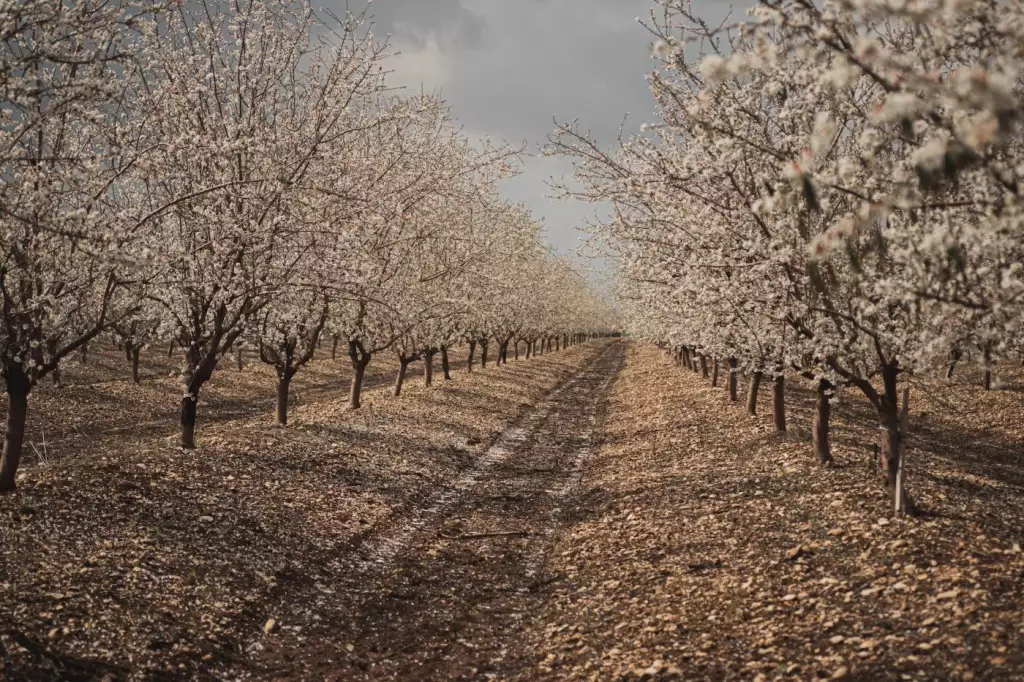
Almond production in the European Union
The European Union (EU) is a significant producer of almonds, with Spain being the largest producer. The EU produced around 220,000 metric tons of almonds in 2020, with Spain accounting for almost 60% of the production.
Almond farming in the EU is done on a larger scale, with the average orchard size being around 25 acres. Yields are around 2,500 pounds per acre, with the cost of production ranging from $2,500 to $3,000 per acre.
Almond production in Turkey
Turkey is the fourth-largest producer of almonds, with most of the production coming from the southeastern region of the country.
Almond farming in Turkey is done on a small scale, with the average orchard size being less than 5 acres. Yields range from 500 to 1,000 pounds per acre, with the cost of production ranging from $500 to $1,000 per acre.
Turkey's almond production has been growing steadily in recent years, with the government promoting almond farming as part of its efforts to diversify the country's agricultural sector.
To learn more about the profit potential of almonds, this article gives a breakdown of their profit per acre.
Essential Factors for Almond Yield
In this section, we'll discuss the essential factors that you need to consider to maximize your almond yield.
The variety of almond trees you choose to grow
Nonpareil, Butte, Monterey, Carmel, Kester, and Wood Colony are some of the most popular almond varieties grown in California.
Nonpareil is the most widely planted variety due to its high kernel quality and market demand. It is also known to be one of the highest-yielding almond varieties.
However, the yield can also depend on various factors such as the tree's age, growing conditions, and management practices. Additionally, some almond varieties may require cross-pollination with other varieties to produce a good yield, so try to consider the specific needs of each variety when selecting which ones to grow.
Irrigation and water availability
Almond trees require adequate water to produce a good yield. Without sufficient water, the trees may not produce as many nuts or may produce nuts that are smaller in size and lower in quality.
In addition, almond trees have different water requirements at different stages of growth. Young trees require more water than mature trees, and trees in hot, dry climates require more water than those in cooler, wetter climates.
Irrigation systems should be designed to provide enough water to meet the trees' needs without wasting water. In areas where water availability is limited, growers may need to consider joining an irrigation district or using recycled water to irrigate their orchards.
Proper irrigation and water management can also help prevent diseases and pests that can damage almond trees and reduce yields. By providing the right amount of water at the right time, growers can create a healthy growing environment that promotes optimal growth and yield.
Nutrition and fertilizers
Almond trees require a balanced supply of nutrients to produce a good yield. Nitrogen, potassium, and boron are some of the essential nutrients required by almond trees.
Growers should regularly test their soil to determine the nutrient levels and adjust their fertilization program accordingly. Over-fertilization can lead to excessive vegetative growth and reduced yield.
In addition to proper fertilization, adequate nutrition is also needed, as it not only helps the trees produce more and better quality nuts but it also helps them resist pests and diseases.

A deficiency in boron can lead to almond hull rot and reduced yield. Similarly, a lack of nitrogen can result in stunted growth and decreased nut size. Therefore, growers need to make sure that their almond trees receive the necessary nutrients through regular fertilization and soil testing.
The pollination process
Almond trees require cross-pollination to produce a good yield. Bees are the primary pollinators of almond trees, and bee activity is critical during bloom. It is estimated that up to 90% of the world's almond production depends on honey bee pollination.
During the bloom period, bees collect nectar and pollen from the almond flowers, transferring the pollen between the flowers and allowing for cross-pollination.
However, there are some challenges to almond pollination, such as the decline in bee populations due to habitat loss and pesticide use.
To ensure good pollination and yield, growers should work with beekeepers to provide a healthy and safe environment for bees. They can also use techniques such as hive placement and supplemental feeding to increase bee activity during bloom. To know the ideal number of beehives to maximize the yield from an acre of almonds, try reading this article.
In addition, the use of pollinizers can help ensure adequate cross-pollination and increase yield. Pollinizers are varieties of almond trees that bloom at the same time as the main variety, providing additional pollen for the bees to transfer between flowers.

